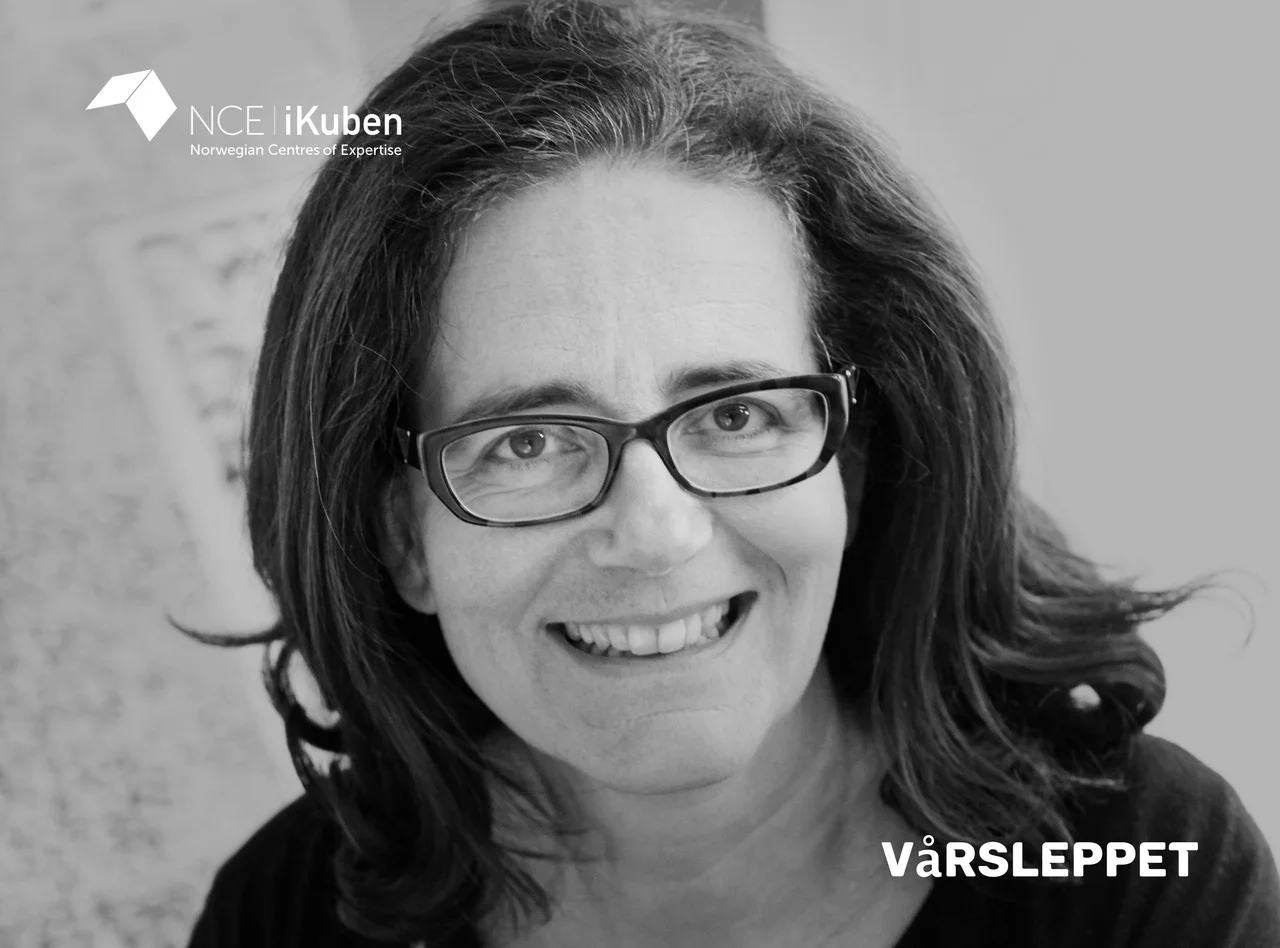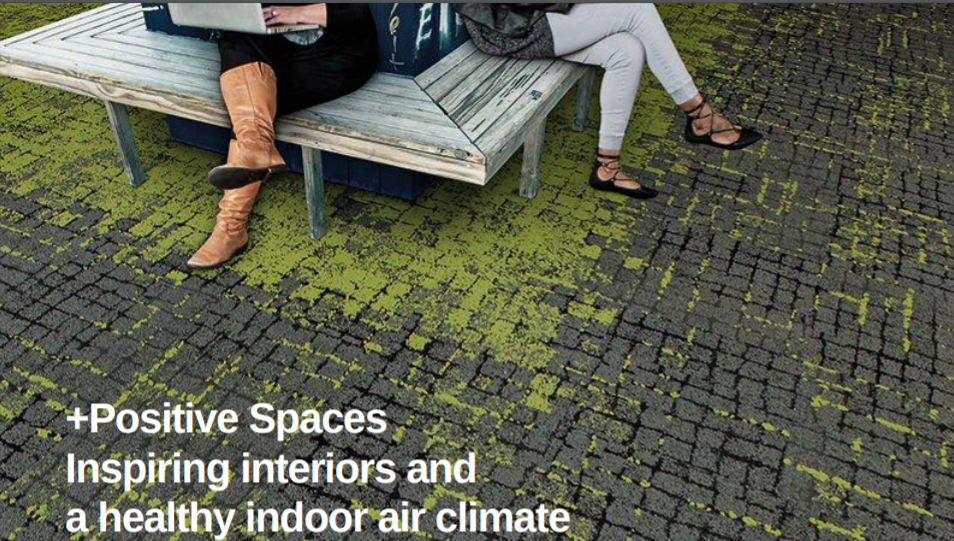Take the climate back, says Genanne Van Arkel, head of sustainable development at Interface
Geanne Van Arkel, head of sustainable development at Interface
How can industrial actors not only reduce their carbon footprint but be carbon negative? Interface shared their journey towards a sustainable, environmentally friendly and profitable manufacturing industry.
Published June 5th 2019.
About Geanne Van Arkel
Head of Sustainability for Europe and the Middle East at Interface
Interface Inc. is the world’s biggest producer of commercial carpet tiles. They develop and use materials and processes that are not only environmentally friendly, but even regenerative.
Focusing on quality while moving to sustainability
– In 1994 we set a mission to become restorative and eliminate any negative impact Interface may have on the environment by 2020. Mission Zero, says Van Arkel.
– Today we have reached several of those goals, and set new ones.
Mission Zero: Geanne Van Arkel shared Interface’s journey from 1994 up till today.
A holistic road map to taking the climate back
Eliminate waste.
Benign emissions.
Use renewable energy.
Close the loop, meaning take responsibility for the whole process.
Use resource efficient transportation.
Sensitizing stakeholders, make them part of the solution
Redesign commerce.
Teaming up with nature since the ’90s while improving the bottom line
In the early '90s, Ray Anderson, the company's founder and CEO, had begun the process of turning all aspects of Interface's operations towards making the company a model of sustainability while at the same time maintaining the financial success.
After reading Paul Hawken's The Ecology of Commerce in 1994, Anderson realized that he could make the company an environmental success as well, by addressing the company's enormous footprint of energy and waste. So they started looking at every aspect, from design to production and waste management.
Nature would lead the design process of carpet tiles in new and unexpected ways.
Biomimicry 3.8
Biomimicry is looking to nature for innovative solutions to our challenges.
– Biomimicry was introduced to the design team in the middle of a major transformation. Over time, biomimicry became one of the company's best methods for executing Anderson's twin goals on enhancing profit while moving towards a "renewable, cyclical, and benign business model.” (Source: Case study Interface Biomimicry Education Network)
“Biomimicry: Innovation Inspired by Nature” by Janine Benyus is a guide to using nature as a model for human products, processes and systems. First published in 1997, it goes into details on how science is studying nature’s best ideas to solve our toughest 21st-century problems.
The design team were challenged to think differently, and after a workshop and a walk through the forest, they realized that no two leaves were alike on the forest floor. So why should carpet tiles be identical? This resulted in the famous Entropy ® design.
The Entropy design reduced production costs and increased user satisfaction. (Source: Interface)
"Traditional carpet tiles must all match exactly and must be installed uniformly and in the same direction. Whereas the new carpet tiles were manufactured with a variety of patterns. Patterns that have a similar look are mixed and matched within each carpet installation and are arranged in random order, creating the visually pleasing "organized chaos" that the design & development team observed on the forest floor. Because the tiles do not need to be identical, carpets in the 12th line can be composed of dye batches that are similar, but not necessarily identical. This eliminates an enormous amount of waste generated during the manufacturing process, in the requirement that all tiles be identical had previously resulted in the rejection of batches that looked slightly different."
Read more about how the Interface design team embraced biomimicry (case study).
What’s in it for a company
Cost reduction
Reputation benefits
Innovation driver
Empowered Employees
Engaged Stakeholder
Future Resilient
(Based on the Interface experience focusing on sustainability as a business strategy since 1994)
What’s in it for me?
Finance
Marketing
Innovation R & D
Human Resources
Public Affairs
Board Shareholder
(Based on the Interface experience focusing on sustainability as a business strategy since 1994)
The next steps going forward
Source: Geanne Van Arkel’s presentation
Van Arkel summed up the talk with the following points:
1) Don't panic!
Apathy and depression doesn´t help. Start somewhere, and build from where you are. Help will come from unexpected sources.
2) Live Zero
Embrace a low carbon life style, this is something everyone can work on. Just look at the solutions of Project Drawdown. Interface supports it’s customers in living zero, by offering all products carbon neutral as a standard, since the impact in of the raw materials and the usage at the customer is compensated throughout the full live cycle.
3) Love carbon
Stop seing carbon as the enemy and start using as a resource.
Interface has started to produce the worlds first carbon-negative carpet tile.
4) Let nature cool
Support our biosphere's ability to regulate the climate.
Use factories and cities as forests, make them clean rather than pollute the air. Let them absorb water, cool the environment and create habitat for biodiversity. In this way construction and development is solving the problem at root cause and we stop only to address the symptoms.
5) Lead the industrial re-revolution
6) Keeping plastics in the economy and out of our ocean
The circular economy is coming at full force. Rethink waste and use it in new ways.
7) Work towards the UNs sustainability goals
8) Get involved, and get active
Just start. People will notice your efforts and help out.
9) Let's reconnect - from learning from nature to functioning as Nature
Read more
Download Geanne Van Arkel’s keynote from Molde april 2019 (.pdf)
Case study: Entropy: Non-directional carpet tiles
Read the first chapter of “Biomimcry” (free)
Sharing is Caring!






